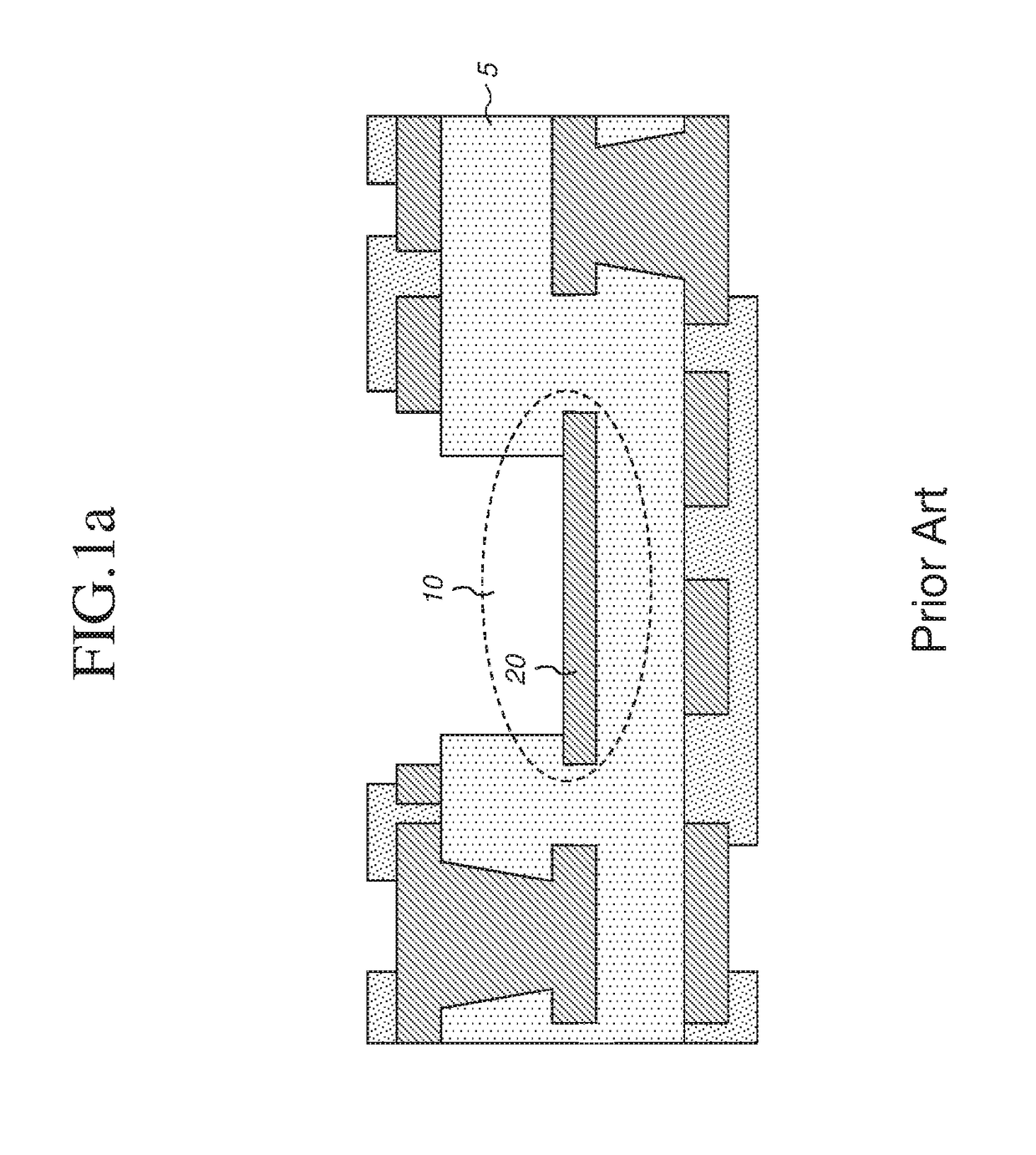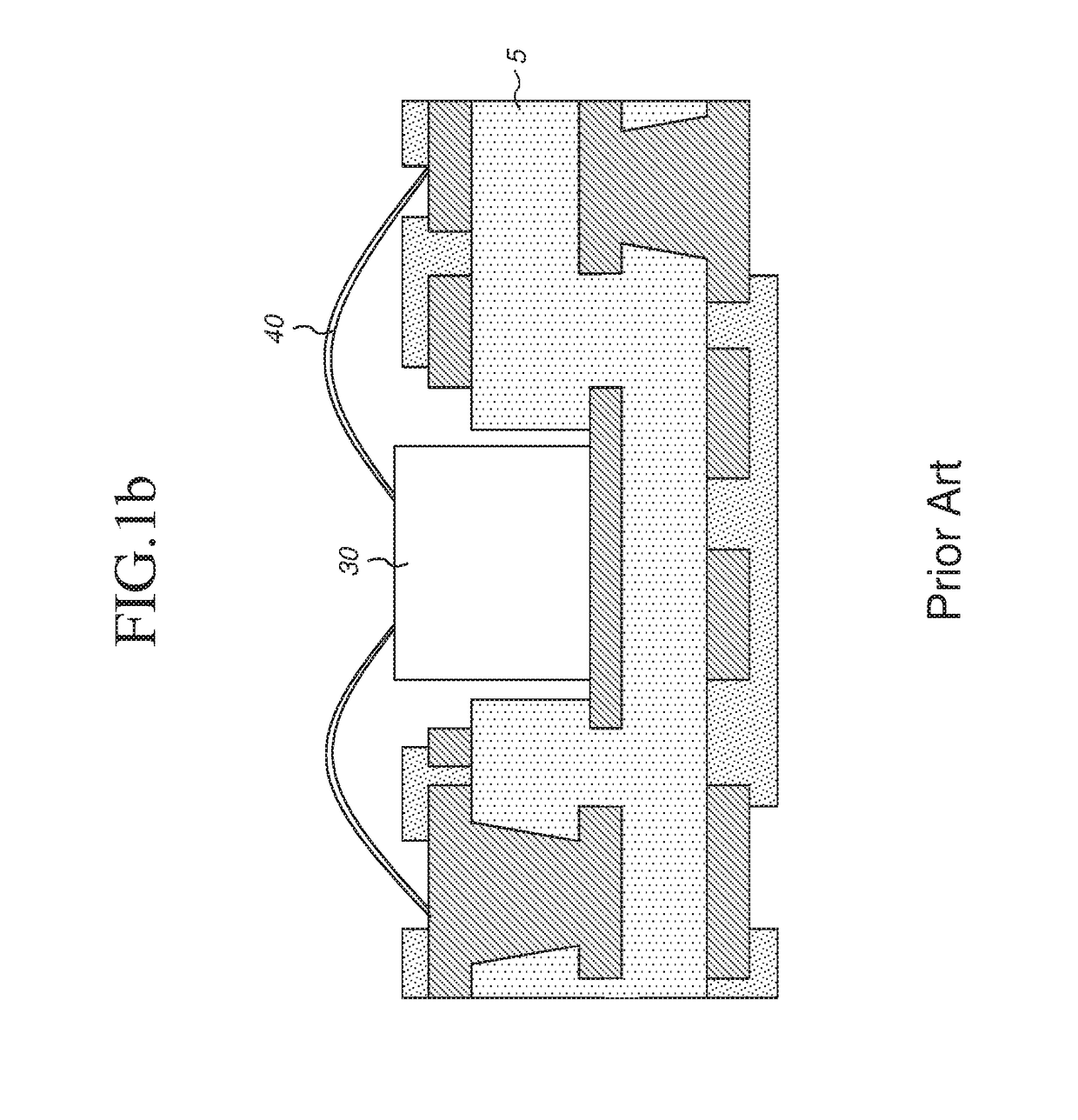Method of manufacturing printed circuit board
a manufacturing method and printed circuit board technology, applied in the direction of printed element electric connection formation, circuit masks, printed circuit non-printed electric components, etc., can solve the problems of not being able to make direct electrical contacts such as flip-chip bonding between the chip electrode and the pads on the package substrate, and not being able to directly mount the semiconductor chip b>, etc., to achieve the effect of reducing manufacturing costs and enhancing integrating density
- Summary
- Abstract
- Description
- Claims
- Application Information
AI Technical Summary
Benefits of technology
Problems solved by technology
Method used
Image
Examples
Embodiment Construction
[0018]Detailed descriptions will be made on preferred embodiments and constitutional features of the fabricating method in accordance with the present invention with reference to attached figures from FIG. 2a to FIG. 2f.
[0019]The starting material in accordance with a preferred embodiment of the present invention is a structure comprising a first insulating layer such as resin or epoxy resin, of which the surface is coated with a copper layer. As a preferred embodiment of the present invention, a CCL (copper cladded laminate) or carrier copper can be utilized for coreless process.
[0020]FIG. 2a is a schematic diagram illustrating the intermediate step of manufacturing the package substrate in accordance with the present invention. Referring to FIG. 2a, a first copper layer with circuit pattern transferred is formed on the surface of the first insulating layer 100. By processing the image process comprising dry film coating, exposure, development, and etch, a general circuit 110a and...
PUM
| Property | Measurement | Unit |
|---|---|---|
| insulating | aaaaa | aaaaa |
| surface flatness | aaaaa | aaaaa |
| size | aaaaa | aaaaa |
Abstract
Description
Claims
Application Information
 Login to View More
Login to View More - R&D
- Intellectual Property
- Life Sciences
- Materials
- Tech Scout
- Unparalleled Data Quality
- Higher Quality Content
- 60% Fewer Hallucinations
Browse by: Latest US Patents, China's latest patents, Technical Efficacy Thesaurus, Application Domain, Technology Topic, Popular Technical Reports.
© 2025 PatSnap. All rights reserved.Legal|Privacy policy|Modern Slavery Act Transparency Statement|Sitemap|About US| Contact US: help@patsnap.com



